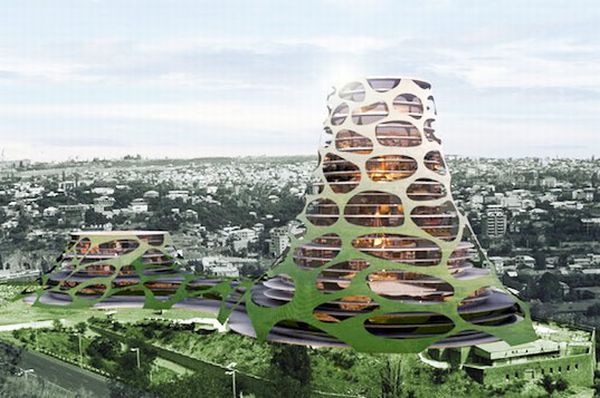
It is true that disasters come unannounced, but it is appreciable to see an increasing awareness today about catastrophes and disaster control and a noticeable trend of safety implementation and precaution in the architecture of buildings located in areas prone to damage.
With rampant floods, earthquakes and hurricanes, it is not merely recommended, but of vital importance for architects and builders to keep in mind precautionary measures in disaster-proofing their works.
Saving the environment is viewed as more of a theoretical concept and may be wrongly confined to the bigger tasks of global warming, ozone layer depletion or acid rains. However, one cannot afford to neglect their own personal ‘micro-environment’, the exact place where they live! From the basic hazards of fire or water that any ordinary household or company may face, buildings, both residential or commercial today must have their structures disaster-protected.
1. Soccer ball-shaped floating houses
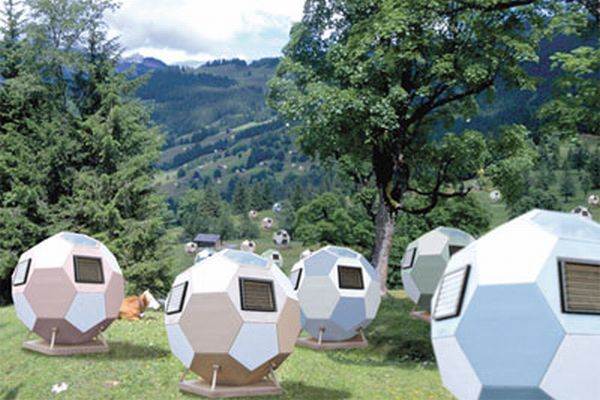
A floating soccer ball, the teenage boy’s fantasy. Sounds imaginary, but it is real. Practical, also. This architecture, termed as the ‘Barier’, was first developed by G-wood in Japan. It is shaped as a ball and can actually float and provide for a rescue ship in times of flood.
Dome-shaped and urethane-walled, this ball provides an optimum circulation of air and heat. It is very strong and has the power to resist a mighty earthquake.
The fantastical and imaginative shape of this construction is symbolic of the power of dreams and is a homage to the spirit of people who dare to hope for a brighter future even in rough times.
2. Low-income disaster-proof bamboo housing
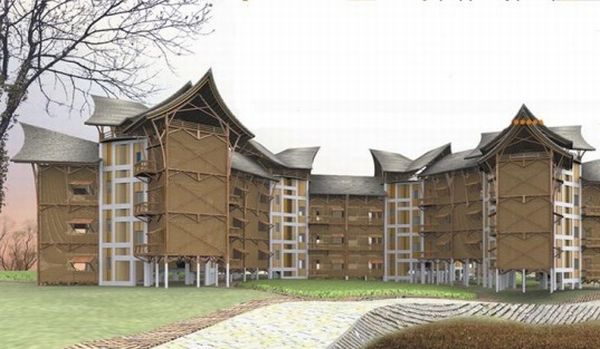
Located in Philippines, these Bamboo houses were originally designed by Indian architects. They have been constructed primarily for the ecological purpose of pollution control and disaster management. The basic concept is a 3-storeyed apartment, built on stilts, provided with an earthquake, wind and water immune core. Diverging from the core are pod-like floors that are bamboo-constructed. There is an escape hatch for overcoming storms and also stilts for the same purpose. Also, the construction is feasible and inexpensive for most to afford.
Come ‘hell or high water’, one can be ready to face any danger with such building.
3. Tornado-proof houses
This is a spectacular innovation from the house of 10 Design. The construction is supported by a cave underneath, leading to a flower that opens into the shell of a turtle, an animal known to outlive most creatures and hence symbolic of strength and survival.
The house is equipped with high-technology sensors that detect the slightest disturbance of a tornado. At first, the entire exterior of the building collapses and it retreats to the ground, seeking refuge in the cavern underneath. A tornado may pass over and the water and rain may be repelled and drained out.
4. Lilypad floating city concept
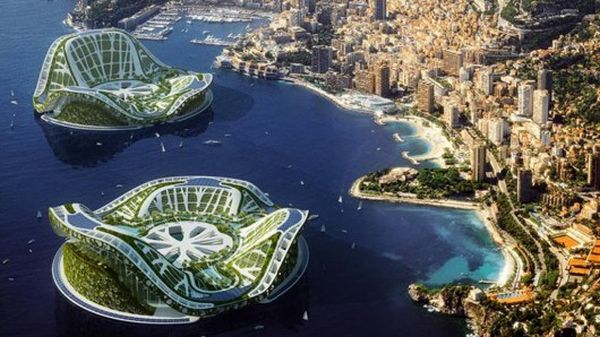
Architect Callebaut, in view of the low lying areas often prone to inundation and the problems faced by people living in these locations, has proposed the idea of a floating city for the rehabilitation of flood victims.
The floating city will be shaped as a lily and can accommodate nearly a fifty thousand of people. The shape of the city takes inspiration from the highly veined leaf of the Victoria lilies. Called the ‘Ecopolis’, the city will be made of polyester fibers coated with titanium oxide for reflection of harmful UV rays. Also, the floating city shall run on alternative fuels of energy namely solar, wind, water, ocean current and thermal.
The construction mainly aims at the rehabilitation of disaster victims. However, it is highly innovative and high-tech real estate for the commoners to afford.
5. 4×4 Foot Life Cube
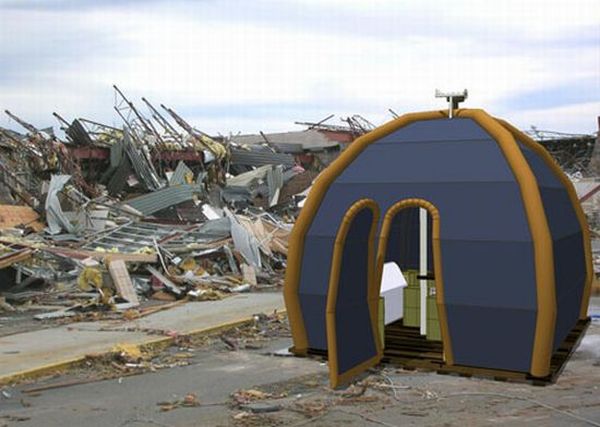
The tiny square boasts of being an ‘all-in-one’ refuge for disaster victims. This small little cube, sized 4×4 is capable of being pumped to 144 square feet and hence can be used in for immediate relocation of people in times of serious catastrophes.
The life cube is a panic room of sorts and is equipped with all the possible necessities of disaster victims. It is also amazingly sturdy and strong. The material it is made of is both tear and fire resistant, making it ideal for rehab purposes.
The cube resembles a camping tent in appearance and is pretty reasonable to afford.
6. Sea shelter from David Eltang
Eltang’s sea shelter rests on the Wadden sea and offers a unique, safe sea-faring experience.
Wadden sea offers high tides and abounds in flora and fauna. Eltang’s symmetrical construction is placed on the shallow sea-bed where it offers visitors to experience the changing tides. This creative piece of architecture allows people to experience the bounteous beauties of the sea in a fun, quirky style.
7. Gregg Fleishman’s Flatpack House
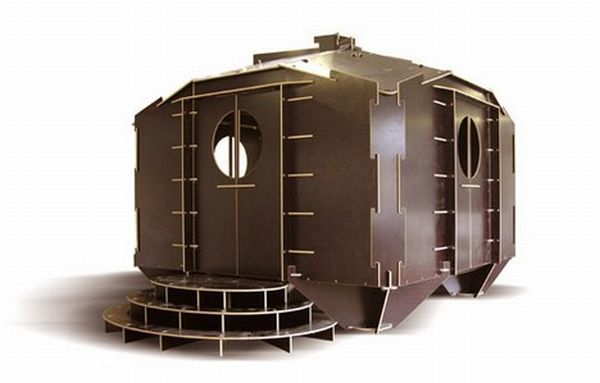
This pioneering invention has been brought to existence by Californian architect Fleishmann. The house has been constructed using European birch plywood with resin coating on both sides. The house cuts into many large pieces of wood forming its various rooms. These planks are held together by artificial adhesives. The rooms are large and voluminous, to provide shelter to as many people as possible. Cover the house with a canvas or plastic sheet, you are ready to face any kind of water damage.
It is a quick, easy and fun method of disaster management, meant especially for the less serious problems of water and rain.
8. Solar-powered Volcano Towers
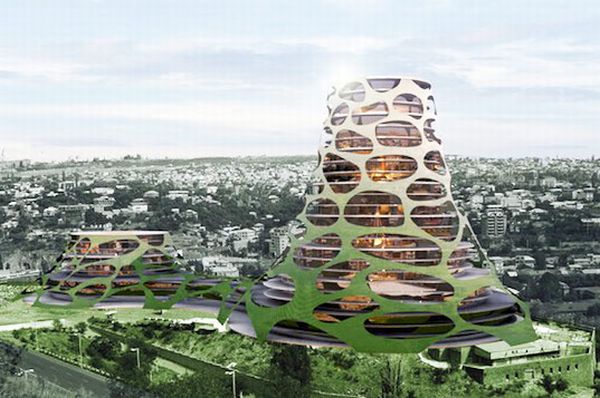
This is a more luxurious approach to disaster-proof architecture. Slovenian company called OFIS has come up with the idea of this building under the Benz hotel tower contest for Armenia city.
The building would include a hotel at its top and shops and stores underneath. The lower structure shall provide for housing and garage. The strong structural system has been manifested in the vertical shape of the tower, for resistance to gravity and other forces generated by shudders underneath. The outer walls of the cores have been made thick for the same purpose. The entire building is covered in a strong, mighty mesh as protection from any calamities.
The construction is also provided with an external shading system to soften the harsh summer light and reduce solar heat. Energy for the entire project is generated mainly from natural resources and also photovoltaic cells that use sun light, hence it is an all solar-powered volcano tower. A concrete embedded plumbing system is also present that helps curbing any draft issues.
9. Anti-atomic Shelter
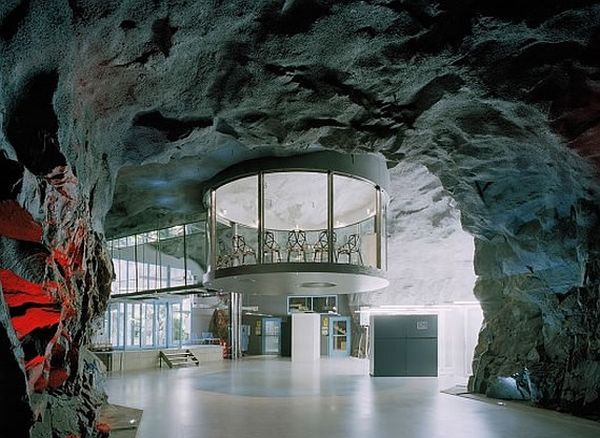
Architects from Stockholm, Sweden have built this anti-atomic shelter under the rocks of Vita Berg in Stockholm. It has been transformed into an office with several cabins, hallways and corridors. It is almost an alien world for the human being, with such cutting-edge technology. However, they have tried to make the shelter more approachable and human-friendly, with natural light, water and greenery.
The shelter is more of a vacuum than a space delimited by rooms. It is both environment friendly as well as disaster-proof because it lies underground, built in strong material and has advanced equipment to face the calamities of earthquake or storm.
10. Elevated Prefab Home On Cusabo Island
The South Carolina islands are prone to hurricanes and tornadoes. On Cusabo island, we see an off-grid residence which is durable to survive any weather. The house is located on an elevation and is made entirely with recycled steel, making it resistant to the calamities of water, wind or fire.
As protection from the floods, Woollen Studio and EcoSteel have planned a helical base and steel structures. To counter hurricanes, we see steel roof panels that allow high wind loading capacities and the building also offers excellent fire-proofing.
Besides, sun-shields and louvered doors permit optimum light and offer sun protection. The home is built on a height in case of flooding but is also provided with a ground level porch as a respite to the heat and insects.

